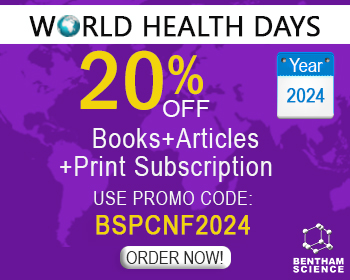Abstract
Angiogenesis is a major factor in the development of benign, inflammatory, and malignant processes of the skin. Endothelial cells are the effector cells of angiogenesis, and understanding their response to growth factors and inhibitors is critical to understanding the pathogenesis and treatment of skin disease. Hemangiomas, benign tumors of endothelial cells, represent the most common tumor of childhood. In our previous studies, we have found that tumor vasculature in human solid tumors expresses similarities in signaling to that of hemangiomas, making the knowledge of signaling in hemangiomas widely applicable. These similarities include expression of reactive oxygen, NFkB and akt in tumor vasculature. Furthermore, we have studied malignant vascular tumors, including hemangioendothelioma and angiosarcoma and have shown distinct signaling abnormalities in these tumors. The incidence of these tumors is expected to rise due to environmental insults, such as radiation and lumpectomy for breast cancer, dietary and industrial carcinogens (hepatic angiosarcoma), and chronic ultraviolet exposure and potential Agent Orange exposure. I hypothesize that hemangiomas, angiosarcomas, and vascular malformations represent the extremes of signaling abnormalities seen in pathogenic angiogenesis.
Current Molecular Medicine
Title: Hemangiomas, Angiosarcomas, and Vascular Malformations Represent the Signaling Abnormalities of Pathogenic Angiogenesis
Volume: 9 Issue: 8
Author(s): J. L. Arbiser, M. Y. Bonner and R. L. Berrios
Affiliation:
Abstract: Angiogenesis is a major factor in the development of benign, inflammatory, and malignant processes of the skin. Endothelial cells are the effector cells of angiogenesis, and understanding their response to growth factors and inhibitors is critical to understanding the pathogenesis and treatment of skin disease. Hemangiomas, benign tumors of endothelial cells, represent the most common tumor of childhood. In our previous studies, we have found that tumor vasculature in human solid tumors expresses similarities in signaling to that of hemangiomas, making the knowledge of signaling in hemangiomas widely applicable. These similarities include expression of reactive oxygen, NFkB and akt in tumor vasculature. Furthermore, we have studied malignant vascular tumors, including hemangioendothelioma and angiosarcoma and have shown distinct signaling abnormalities in these tumors. The incidence of these tumors is expected to rise due to environmental insults, such as radiation and lumpectomy for breast cancer, dietary and industrial carcinogens (hepatic angiosarcoma), and chronic ultraviolet exposure and potential Agent Orange exposure. I hypothesize that hemangiomas, angiosarcomas, and vascular malformations represent the extremes of signaling abnormalities seen in pathogenic angiogenesis.
Export Options
About this article
Cite this article as:
Arbiser L. J., Bonner Y. M. and Berrios L. R., Hemangiomas, Angiosarcomas, and Vascular Malformations Represent the Signaling Abnormalities of Pathogenic Angiogenesis, Current Molecular Medicine 2009; 9 (8) . https://dx.doi.org/10.2174/156652409789712828
| DOI https://dx.doi.org/10.2174/156652409789712828 |
Print ISSN 1566-5240 |
| Publisher Name Bentham Science Publisher |
Online ISSN 1875-5666 |
 15
15
- Author Guidelines
- Graphical Abstracts
- Fabricating and Stating False Information
- Research Misconduct
- Post Publication Discussions and Corrections
- Publishing Ethics and Rectitude
- Increase Visibility of Your Article
- Archiving Policies
- Peer Review Workflow
- Order Your Article Before Print
- Promote Your Article
- Manuscript Transfer Facility
- Editorial Policies
- Allegations from Whistleblowers
Related Articles
-
Quantum Dots and Their Clinical Applications
Nanoscience & Nanotechnology-Asia Novel Oral Anticoagulants for Venous Thromboembolism with Special Emphasis on Risk of Hemorrhagic Complications and Reversal Agents
Current Drug Therapy Emerging Roles for Connexins in Hypertension
Current Hypertension Reviews Current Management of Vascular Tumors in the Neonate
Current Pediatric Reviews Early Life Programming of Obesity: The Impact of the Perinatal Environment on the Development of Obesity and Metabolic Dysfunction in the Offspring.
Current Diabetes Reviews Metabolic Profiling in Disease Diagnosis, Toxicology and Personalized Healthcare
Current Pharmaceutical Biotechnology The Role of Venous Abnormalities in Neurological Disease
Reviews on Recent Clinical Trials Neonatal Persistent Pulmonary Hypertension Associated with Congenital Cystic Adenomatoid Malformation Treated with Sildenafil: Case Report
Current Pediatric Reviews Cocaine Dependence and Stroke: Pathogenesis and Management
Current Neurovascular Research Clinical Research on the Aortic Elasticity in Patients with Type 1 Diabetes Mellitus Complicated with Hypertension
Current Medical Imaging Endocannabinoid Regulation of Matrix Metalloproteinases: Implications in Ischemic Stroke
Cardiovascular & Hematological Agents in Medicinal Chemistry Syncope in a Child with Pulmonary Hypertension and Positive Gene Tests for Hereditary Hemorrhagic Telangiectasia and Long QT Syndrome
Cardiovascular & Hematological Agents in Medicinal Chemistry SPECT Imaging and Cerebrovascular Disease
Vascular Disease Prevention (Discontinued) Inhibition of Angiogenesis as a Treatment Strategy for Neuroblastoma
Current Cancer Therapy Reviews The Role of Aryl Hydrocarbon Receptor-Regulated Cytochrome P450 Enzymes in Glioma
Current Pharmaceutical Design Statins, Mevalonate Pathway and its Intermediate Products in Placental Development and Preeclampsia
Current Molecular Pharmacology Properties and Clinical Development of a Novel Coating Technology: The poly[bis(trifluoroethoxy)phosphazene]
Recent Patents on Drug Delivery & Formulation Editorial [Hot Topic: New Avenues of Research on Multiple Sclerosis from the Perspective of Chronic Cerebrospinal Venous Insufficiency Paradigm (Guest Editor: Marian Simka)]
Reviews on Recent Clinical Trials Raman Spectroscopy and Imaging: Promising Optical Diagnostic Tools in Pediatrics
Current Medicinal Chemistry Surgical Management of Mullerian Duct Anomalies
Current Women`s Health Reviews























